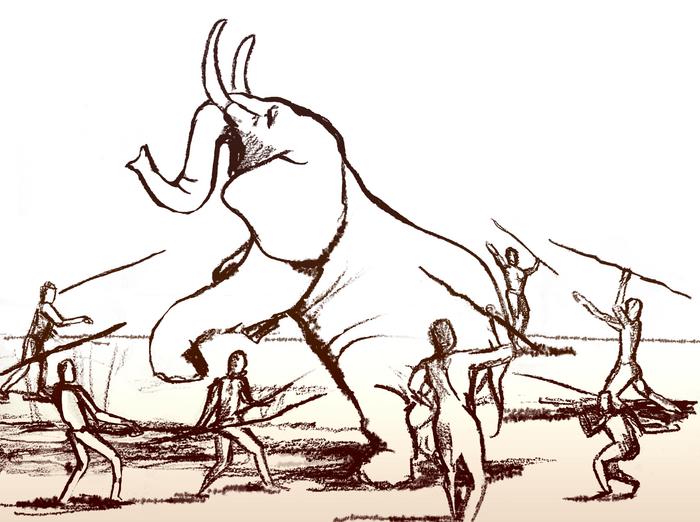 TEL AVIV, ISRAEL—According to a Live Science report, a new study suggests that hominins who lived in what is now the Upper Galilee used local quarries to make tools for hunting and butchering elephants that visited nearby water sources between about two million and 500,000 years ago. Meir Finkel of Tel Aviv University said that elephants follow the same routes to reliable water sources because they each consume more than 100 gallons of it daily. Finkel and his colleagues examined such migration routes used by ancient elephants, based upon the landscape of the Upper Galilee and fossils analyzed in an earlier study, and determined that they corresponded with local hominin quarries. These quarries were also within walking distance of several Paleolithic sites, the researchers noted. But killing, butchering, and preserving such a large animal is a dangerous undertaking that draws other predators. The job would have had to have been completed quickly. Large quantities of suitable cutting tools would have been prepared in advance of the hunt, explained Ran Barkai of Tel Aviv University. “It was tradition: For hundreds of thousands of years, the elephants wandered along the same route, while humans produced stone tools nearby,” he concluded. Read the original scholarly article about this research in Archaeologies. To read about the discovery of the remains of a mammoth that was butchered some 14,500 years ago in what is now Illinois, go to "America, in the Beginning: Schaefer and Hebior Kill Sites."
TEL AVIV, ISRAEL—According to a Live Science report, a new study suggests that hominins who lived in what is now the Upper Galilee used local quarries to make tools for hunting and butchering elephants that visited nearby water sources between about two million and 500,000 years ago. Meir Finkel of Tel Aviv University said that elephants follow the same routes to reliable water sources because they each consume more than 100 gallons of it daily. Finkel and his colleagues examined such migration routes used by ancient elephants, based upon the landscape of the Upper Galilee and fossils analyzed in an earlier study, and determined that they corresponded with local hominin quarries. These quarries were also within walking distance of several Paleolithic sites, the researchers noted. But killing, butchering, and preserving such a large animal is a dangerous undertaking that draws other predators. The job would have had to have been completed quickly. Large quantities of suitable cutting tools would have been prepared in advance of the hunt, explained Ran Barkai of Tel Aviv University. “It was tradition: For hundreds of thousands of years, the elephants wandered along the same route, while humans produced stone tools nearby,” he concluded. Read the original scholarly article about this research in Archaeologies. To read about the discovery of the remains of a mammoth that was butchered some 14,500 years ago in what is now Illinois, go to "America, in the Beginning: Schaefer and Hebior Kill Sites."
Hominins Quarried Stone Near Animal Migration Routes
